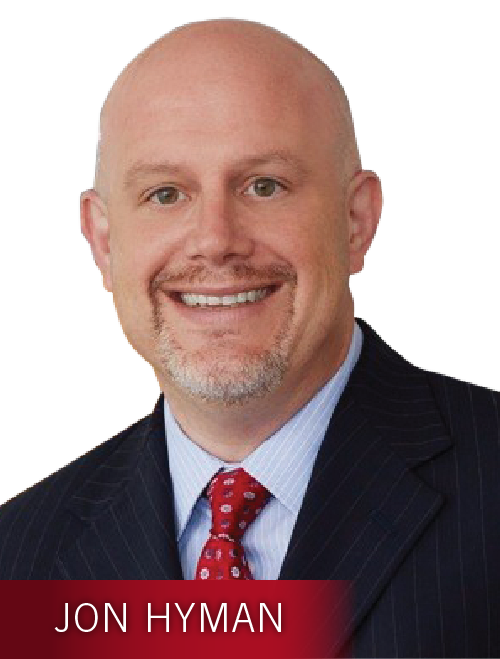In 2018, 40 states put through legislation on pay equity practices.

There is no shortage of laws that give all people the right to be free from discrimination in compensation, including the Equal Pay Act of 1963, Title VIl of the Civil Rights Act of 1965, the Age Discrimination in Employment Act of 1967, and Title I of the ADA Act of 1990.
Pay equity is a critical issue for our time. It’s proven to drive profits for companies that support it. So why is it taking legislation to get companies to move towards a more fair and equitable pay system?
Perhaps it’s the misperception that pay equity means treating everyone the same way. But equal doesn’t mean fair. The goal of pay equity is not to treat everyone the same — it’s actually just the opposite. You can treat people fairly and still treat them differently. Factors such as educational background, tenure, skill, quality of work, etc., are all variables that can, and should, be factored into the mix. But, biases based on personal attributes, such as race, gender, age, disability, sexual orientation and more, are variables that should not affect pay.
Pay equity is equal pay for work of equal value. It is also used to describe pay comparisons where there is no unexplained difference pay, and that is not the result of defensible and legitimate factors. Therefore, pay inequity is any difference in pay that is unexplained, or not the result of defensible and legitimate factors.
According to the World Economic Forum Global Gender Gap Report for 2018, which benchmarks 149 countries on their progress toward gender parity, the US ranked No. 51 in the world. We can do better. By comparison, Iceland, Norway and Sweden occupy the top three spots. And, although many countries have achieved important milestones toward gender parity, much still needs to be done.
Pay equity includes total compensation — including overtime pay, bonuses, stock grants, profit sharing and bonus plans, and yes, life insurance, PTO and holiday pay, travel allowances, reimbursement for travel expenses. However, we need to remember all the processes that result in a worker paycheck, including promotions, performance reviews, merit raises, access to the CEO and representation on the leadership team since they all can impact pay differences over time.
And, while individual organizations have their own formulas for fair and equitable compensation, everyone will benefit by evaluating pay equity in the broader ecosystem. Solving pay equity comes from organizations and their leaders who take ownership of culture, pay programs and total rewards.
The first step is for organizations to be willing to take a look at their own data and processes. And then be willing to acknowledge it if there are issues around pay equity and work to solve for it. Some may desire to make their process and findings public inside their companies, and then share the plan to monitor it regularly to ensure continued pay equity.
Here are three things to get started:
- Analyze average pay of people within an organization to find patterns. Start by role-to-role comparisons, then group to group, the protected classes.
- Evaluate the hiring processes to ascertain diversity of teams and the ways in which your process results in a wide range of candidates.
- Evaluate the processes which reward, promote, and give feedback to your workforce. Are they equitable or did the majority of raises go to one gender, racial, or age group?
To solve for pay equity issues we must look closely at representation. We need more women, people of color, and the LGBTQ community in leadership positions such as on corporate boards. According to Heidrick & Struggles, men hold 93 percent of the CEO positions in U.S. companies. Further research from ISS Analytics found that the percentage of female directors is just 24 percent in the United States.
Total rewards programs include anything that signals to the employee that they are important. The most effective total rewards programs are enacted through the lens of inclusion and take into consideration representation from under represented groups.
It’s also critical to be transparent as to how rewards are given out and how employees can navigate the system. Today, most employees do not have any idea how their pay packages are put together. An organization’s goal is transparency so that people understand how to navigate the culture and achieve their potential at work, which affords them the chance to have a great life.
For example, ACIPCO, an international provider of clean energy technology and services, provides quarterly profit sharing, an on-site health care facility and rewards workers for good tips/suggestions. They also give access to the company plane and yacht when employees need it — and this is not based on hierarchy, everyone gets access. It’s no wonder that they consistently land on Fortune’s 100 Best Companies to Work For and, in an industry where turnover is 80- to 100 percent, they have less than .05 percent a year.
Starbucks offers free Spotify premium and free online classes at Arizona State University and, of course, free coffee. Netflix offers one-year parental leave and Salesforce.com provides commuter benefits, educational reimbursement, refinancing of student debt and 24-hour travel assistance.
Because of the impact on culture, customers, and on the regulatory environment, it’s vitally important that attention to this comes from the C-suite, not just from HR. The critical role for HR is to observe, rebuild systems, make sure the data is accurate and challenge the C-suite and the existing ways of doing things to be the champion of the people experience.
Here are the takeaways:
- Don’t shy away from the issue of pay equity. Embrace its importance and build processes around the issue rather than waiting for federal or state laws to dictate what you need to do.
- Analyze and understand current plans that are in place. If a woman or minority is disadvantaged from the start of employment, that’s a problem that will grow exponentially.
- Consistently look at and monitor the process, review it and test it.
- Assess gaps from these measurements and make changes accordingly.
- Institute transparency between employees and leadership so that you’re setting the narrative and telling your own story rather than allowing social sharing to drive it and derail it.
In short, paying people fairly is a great idea for many reasons and a great business practice. Don’t be afraid to look at your own pay equity issues. It’s better to be in the know.
The result is a boost in reputation, the ability to recruit the best talent and to provide employees the ability to maximize their contributions to the organization.















